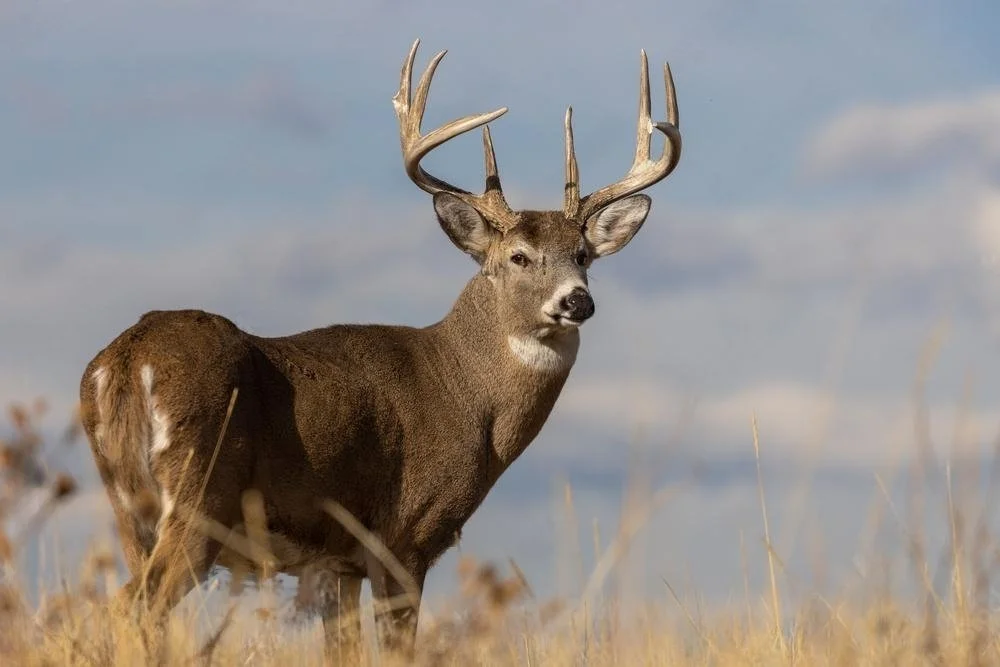Understanding Whitetail Deer Behavior Throughout the Seasons
Whitetail deer are fascinating creatures, and their behavior shifts with the seasons, driven by survival instincts, weather, and biological rhythms. For hunters, understanding these seasonal changes is the key to a successful hunt. Let’s dive into how whitetail deer behave throughout the year and how you can adapt your hunting strategies to match their movements.
What Happens to Whitetail Deer in Spring?
How Do Whitetail Deer Behave in Spring?
Spring is a time of renewal. After enduring the challenges of winter, whitetail deer focus on replenishing their energy reserves. Does (female deer) prepare for fawning, while bucks (male deer) regrow their antlers. During this time, deer are most active in areas with abundant food, like fresh vegetation, as they rebuild their strength.
How Can You Hunt Whitetail Deer in Spring?
While spring hunting opportunities are limited in most states, this is a great time to scout. Look for trails, bedding areas, and feeding spots that deer frequent. Understanding their spring behavior sets a foundation for future hunts.
What Are Whitetail Deer Doing in
Summer?
How Do Whitetail Deer Behave in Summer?
In summer, deer settle into predictable routines. Bucks grow velvet-covered antlers and tend to travel in bachelor groups, sticking to specific feeding and bedding areas. Does stay close to their fawns, and both prioritize safety in secluded areas.
How Can You Hunt Whitetail Deer in Summer?
If your state allows summer hunting, focus on food sources like soybean fields, alfalfa, and lush grasslands. Use trail cameras to track deer patterns, as they often move during cooler parts of the day, like early mornings and evenings.
What Happens During Fall: The Rut and Peak Hunting
Season?
How Do Whitetail Deer Behave During the Fall Rut?
Fall is the most dynamic season for whitetail deer. As the days shorten, bucks prepare for the rut (mating season) by increasing activity, marking territory, and sparring with other males. Does become receptive to breeding, and deer are highly mobile.
Key phases of the fall rut include:
-
Pre-rut: Bucks increase movement, rub trees, and create scrapes to mark territory.
-
Peak rut: Bucks actively chase does, often disregarding their usual caution.
-
Post-rut: Bucks rest and recover, while does focus on finding food.
How Can You Hunt Whitetail Deer in Fall?
-
Pre-rut: Hunt near scrapes and rub lines where bucks leave their scent.
-
Peak rut: Position yourself near doe feeding areas to intercept chasing bucks.
-
Post-rut: Focus on bedding areas where bucks recover from the intense activity.
What Do Whitetail Deer Do in Winter?
How Do Whitetail Deer Behave in Winter?
Winter is a harsh season for whitetail deer. Bucks are depleted from the rut, and all deer prioritize conserving energy and finding high-calorie food sources. Movement is more concentrated around areas that offer both food and shelter.
How Can You Hunt Whitetail Deer in Winter?
Key in on food plots and dense cover where deer find refuge from the cold. Late-season hunting can be rewarding if you’re patient and prepared for the elements. Deer often move during midday when temperatures are slightly warmer.
What Are Some General Tips for Hunting Whitetail Deer Year-Round?
-
Study the Weather: Deer movement increases before storms and during cooler days in hot months.
-
Adapt to Food Sources: Deer follow food. As the seasons change, so do their feeding preferences.
-
Know Their Habits: Bucks and does behave differently. Adjust your strategy depending on whether you’re targeting one or the other.
-
Stay Patient: Understanding behavior is half the battle; staying quiet and patient seals the deal.
Why Whitehouse Whitetails Is Your Go-To Hunting Destination?
At Whitehouse Whitetails, our expert guides understand the nuances of whitetail deer behavior throughout the seasons. Whether you’re new to hunting or a seasoned pro, they offer tailored experiences that ensure your hunt is not only successful but unforgettable.

